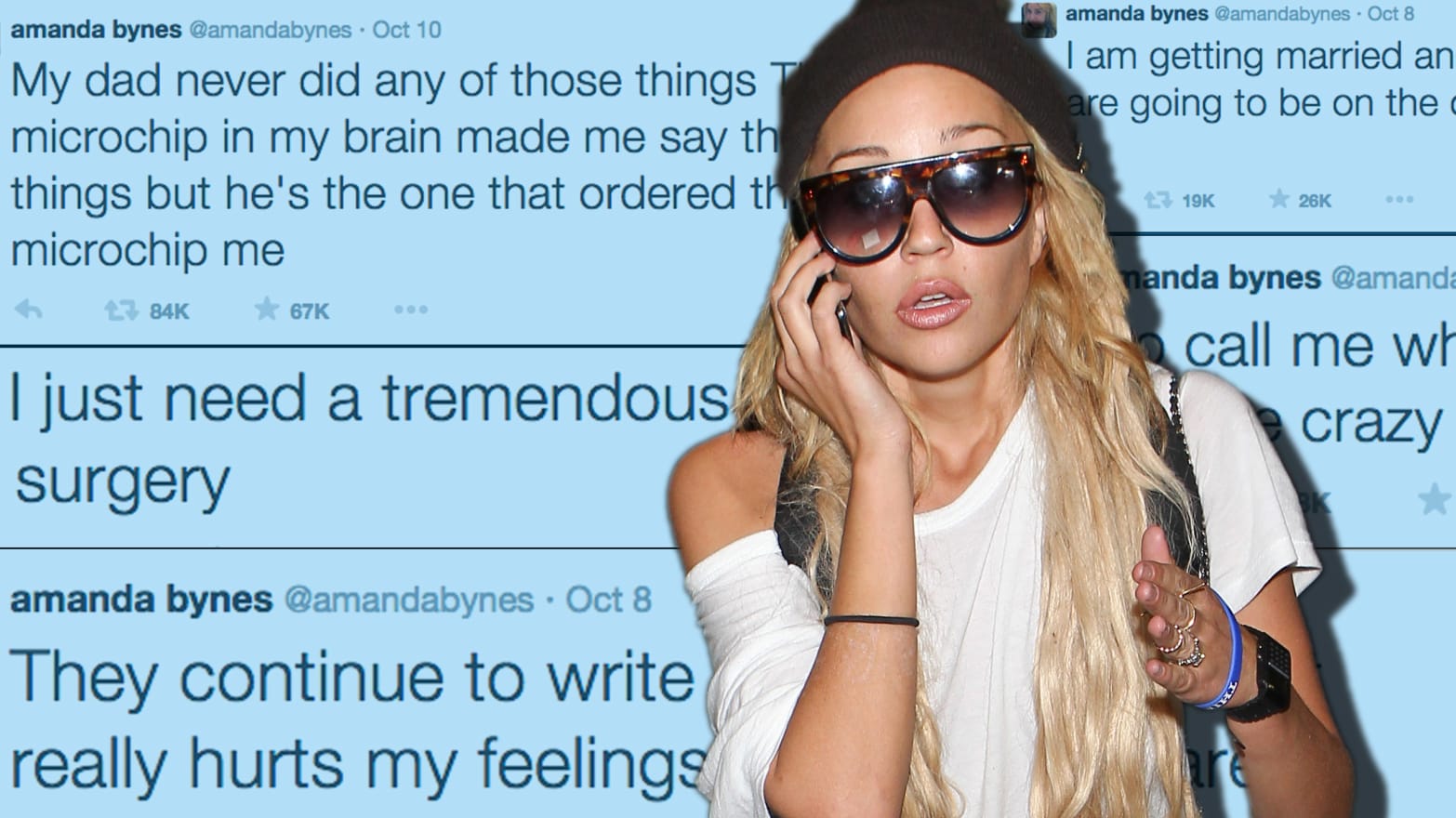We love a train wreck because it makes us feel better about our own problems.
A smoldering car crash on the side of the interstate reminds us of a scene in a movie about illegal street racers who risk it all for fame and fortune. And when tabloid magazines and gossip blogs chronicle the downward spiral of a pretty young actress who’s losing it again, it can be hard to remember that this isn’t happening just for us. It’s not a reality show, it’s reality. And it’s really very sad.
Amanda Bynes hasn’t made a movie since 2010, when she first announced her retirement from Hollywood, but she has remained relevant because she’s a celebrity and as such lacks the privilege of privacy. You could say this is the bargain she made when she entered the industry, but Amanda had become a household name by the time she was 10, and children can’t be expected to understand the future consequences of their kiddie careers.
In the days leading up her most recent 5150 psychiatric hold—she was involuntarily hospitalized in Pasadena this past Friday, and on Monday her stay was formally extended by two weeks—Amanda exhibited a number of bizarre and troubling behaviors that were hastily photographed, filmed, and blogged about. She stripped topless in public, she shoplifted, she threw temper tantrums at airports across New York City, she danced like no one was watching—when we all were, we couldn’t help it, it was being broadcast before us across all media—and, most alarming, she tweeted allegations of sexual abuse by her father, before recanting and blaming the outburst on a microchip in her brain.
Last year, after a string of similarly strange events, and after her first 5150, it was reported that Amanda was being treated for a dual diagnosis of schizophrenia and bipolar disorder—a diagnosis her mother Lynn and the Bynes’ family lawyer Tamar Arminak both denied, saying “she has no mental illness whatsoever.”
However, as The Wall Street Journal reports, under California state law, “involuntary civil commitment for psychiatric treatment is governed under a 47-year-old law called the Lanterman-Petris-Short Act,” which states that “an authorized mental health professional at a facility—or a police officer—can put a person in a 72-hour hold with probable cause to believe that the person is a danger to himself or others due to a mental disorder.”
I am not a psychologist, and it would be irresponsible for me to even guess at what is going on here, but it is plain to see that Amanda is unwell psychologically. She needs professional help and a support system she can trust. Perhaps Lynn Bynes and her legal team have denied the diagnoses to protect Amanda; after all, there is still great stigma attached to all mental illness—even depression carries a weight, a blemish of imperfection on a public persona. We can only hope that they are working cooperatively with the doctors and experts currently assigned to the care of the former child star. And so long as that’s the case, Amanda’s team can deny whatever they want. We don’t need to know Amanda Bynes’ psychiatric portfolio. We are owed nothing. It’s really none of our business.
Mental illness is a disease just as much as cancer or chlamydia. It is not elective, it is not fun, and it certainly is not funny. We don’t go around photographing chemotherapy patients, hoping to catch them in a fragile moment. When Angelina Jolie announced that she had undergone an elective double mastectomy, she was celebrated as brave and inspiring to women the world over. There was no bounty for photographs of her scars.
So why is it okay for paparazzi agencies to send out their goons when a young woman is publicly exhibiting symptoms of a mental health emergency? It isn’t. It’s shameful. It’s been nearly a decade since Britney Spears’ own well-documented, much-maligned mental breakdown, and the conversation has barely changed. That’s shameful, too. What is wrong with us?
By continuing to cover Amanda’s psychological spiral downwards, by blogging about and photographing every strange behavior and public outburst, we are only hurting her. We are making light of a grave issue, and turning private pain into public entertainment. I know, I know. I’m writing about her myself. But in writing this piece, I’ve tried to leave out the salacious details that sites like TMZ and Gawker and Page Six have cataloged in full. I’ve tried to provide only the most cursory context, free of judgment and snark.
I hope that my message comes across clearly: The Amanda Show wrapped in 2002. Let’s leave her alone.

